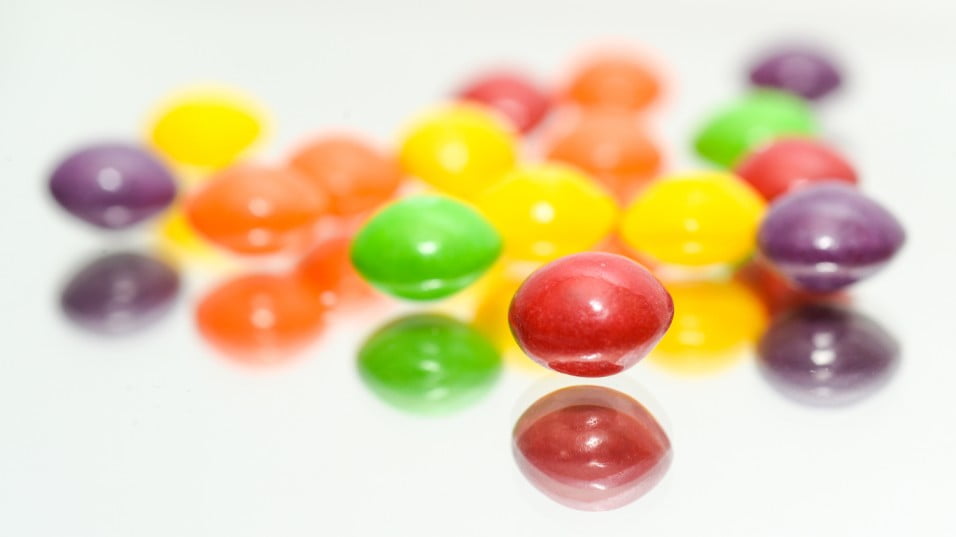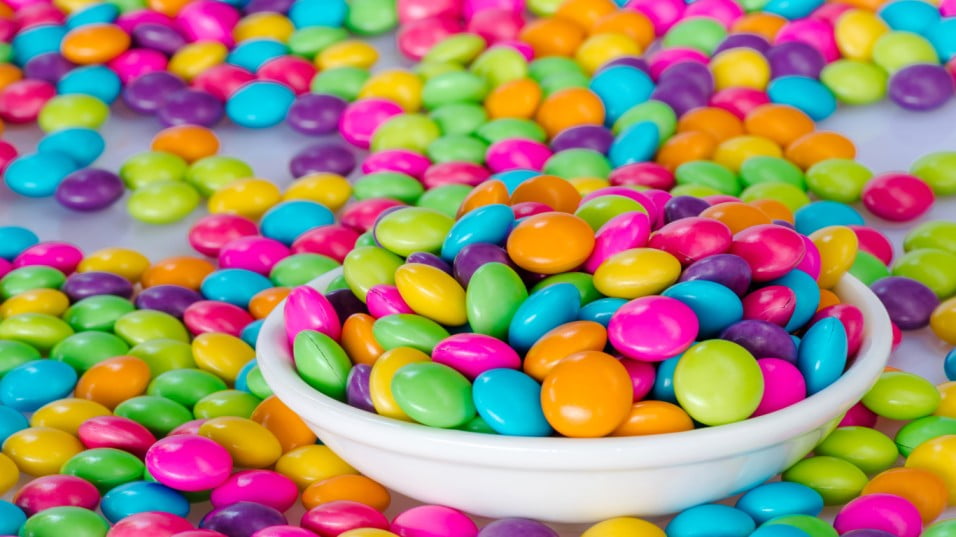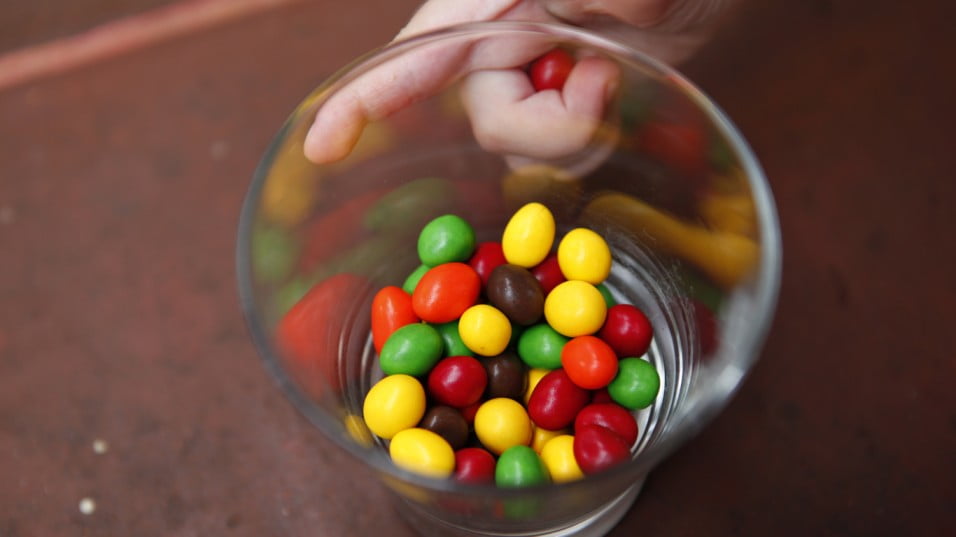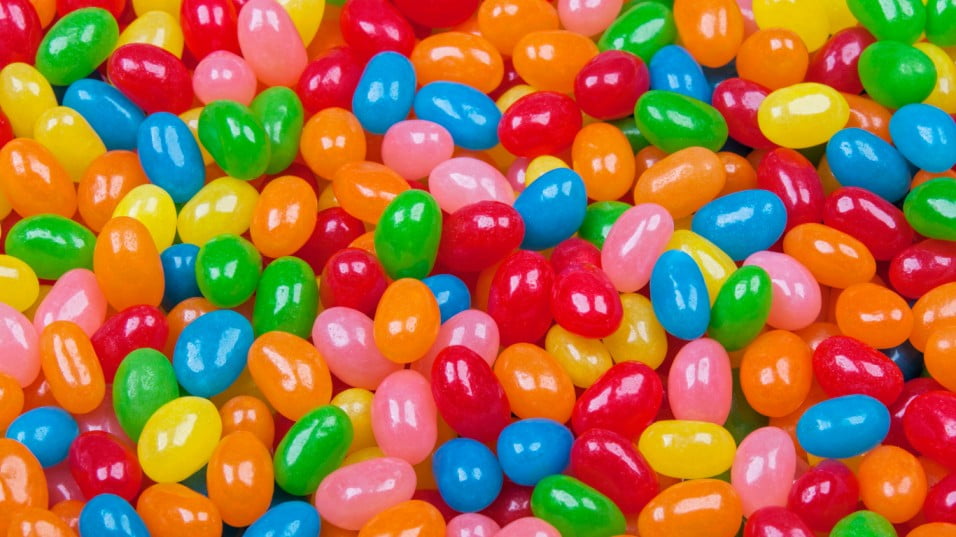Explores the innovative culinary realm of Freeze Dried Skittles, delving into the transformative process that takes these iconic candies from their original chewy state to a cosmic crunch. Aptly titled “Rainbows Candie,” our study investigates the impact of freeze-drying on Skittles, examining changes in texture, flavor, and overall consumer experience. Through a combination of sensory analysis, scientific methodologies, and taste testing, we aim to uncover the secrets behind the freeze-drying phenomenon and its influence on one of the world’s favorite colorful treats.
This research not only promises insights into the technical aspects of the process but also seeks to capture the essence of the frozen rainbow in every bite. Join us on this flavorful journey as we unravel the mysteries of “The Cosmic Crunch of Freeze-Dried Skittles.
What is freeze dried skittles

Freeze-dried Skittles are a variation of the popular fruit-flavored candy Skittles that has undergone a process known as freeze-drying. In traditional Skittles, the candies are chewy, with a sugar coating that provides a burst of fruity flavor when bitten into. The freeze-drying process involves removing the moisture content from the candies, transforming them into a crispy and lightweight texture.
The freeze-drying method typically follows these steps:
1. Freezing: The Skittles are frozen to a very low temperature.
2. Vacuum: The frozen Skittles are then placed in a vacuum, which reduces the surrounding air pressure.
3. Sublimation: The low pressure allows the frozen water content in the Skittles to undergo sublimation, meaning it transitions directly from a solid (ice) to a gas (water vapor) without passing through the liquid phase. This removes the moisture from the candies.
The result is a crunchy and airy version of Skittles with an intensified flavor. Freeze-dried Skittles maintain the same vibrant colors as the original candy but offer a unique texture that some people find enjoyable. This form of Skittles is often marketed as a novel and innovative snack, providing a different experience for those who appreciate variations on classic treats.
What is the point of Freeze Dried Skittles?
Freeze-dried Skittles offers a unique twist on the traditional chewy candy experience. The process of freeze-drying involves removing the moisture from the candies, leaving behind a crispy and crunchy texture. This transformation brings about several points of interest and appeal:
- Textural Innovation: The freeze-drying process provides a novel texture to Skittles, turning them from chewy to crispy. This textural innovation can be intriguing and enjoyable for those who appreciate a different mouthfeel.
- Extended Shelf Life: Removing moisture through freeze-drying can contribute to a longer shelf life for Skittles compared to their original form. This can be advantageous for both consumers and retailers, as the product remains fresh for a longer period of time.
- Flavor Intensity: Some enthusiasts argue that freeze-dried Skittles offer a more concentrated and intense flavor experience. With the absence of moisture, the taste might be perceived as more vibrant.
- Snacking Convenience: The crispiness of freeze-dried Skittles can make them a convenient and mess-free snack. The absence of stickiness associated with traditional Skittles may appeal to those looking for a cleaner and more portable snacking option.
- Novelty and Entertainment: Freeze-dried Skittles can be seen as a novelty or a fun twist on a classic candy, appealing to consumers who enjoy experimenting with different forms and textures of familiar treats.
While the preference for freeze-dried Skittles is subjective, the product’s appeal lies in its ability to offer a new and exciting way to enjoy the iconic candy.
Is it safe to eat freeze dried Skittles?

Yes, freeze-dried Skittles are generally safe to eat. The process of freeze-drying removes moisture from the candies, and this preservation method is commonly used in the food industry to extend the shelf life of various products. The process doesn’t involve any harmful chemicals, and it helps prevent the growth of microorganisms that can cause spoilage.
However, as with any food product, it’s important to consider individual dietary restrictions or allergies. Check the product’s ingredient list for any substances to which you or others consuming the Skittles may be allergic. Additionally, always follow proper storage instructions to maintain the quality and safety of the product.
If you have specific concerns or health conditions, it’s advisable to consult with a healthcare professional or a nutritionist for personalized advice. In general, though, freeze-dried Skittles are considered a safe and innovative variation of the classic candy.
Why is freeze-dried candy so expensive?

Freeze-dried candy can be more expensive than its traditional counterparts for several reasons:
1. Specialized Process: The freeze-drying process is a specialized and relatively complex method that involves freezing the product and then removing the moisture through sublimation in a vacuum. This process requires specialized equipment and technology, contributing to higher production costs.
2. Energy Consumption: Freeze-drying can be energy-intensive, as it involves maintaining low temperatures and creating a vacuum. The energy costs associated with this process can contribute to the overall expense of producing freeze-dried candies.
3. Raw Material Costs: The cost of raw materials, including the candy itself, can contribute to the overall expense. Certain candies may be more expensive to produce in a freeze-dried form due to their ingredients or specific formulations.
4. Limited Production Scale: Freeze-dried candies might be produced in smaller batches compared to traditional candies. Limited production scale can lead to higher costs per unit due to reduced economies of scale.
5. Market Demand and Novelty: Freeze-dried candies are often marketed as a novelty or specialty product, and consumers may be willing to pay a premium for the unique texture and experience they offer. This perceived value can influence pricing.
6. Quality Control: Maintaining the quality and consistency of freeze-dried products requires rigorous quality control measures. This can involve additional testing and inspection processes, contributing to production costs.
While freeze-dried candies may be more expensive, some consumers are willing to pay a premium for the unique characteristics and novelty associated with these products. As technology advances and production processes become more efficient, there is a possibility that prices may become more competitive over time.
Why do people eat freeze-dried candy?

People eat freeze-dried candy for several reasons, each tied to the unique qualities and experiences offered by this form of the treat:
- Novelty and Innovation: Freeze-dried candy provides a novel and innovative twist on traditional sweets. The transformation of the candy’s texture from chewy to crispy through the freeze-drying process offers a unique and interesting experience for consumers.
- Texture Preference: Some individuals prefer the crunchiness and lightness of freeze-dried candy over the original chewy texture. The change in texture can add an element of surprise and variety to the eating experience.
- Intensified Flavor: The freeze-drying process is believed by some to intensify the flavor of the candy. The removal of moisture concentrates the taste, providing a potentially more vibrant and flavorful sensation with each bite.
- Snacking Convenience: The crispiness of freeze-dried candy can make it a convenient and mess-free snack. Without the stickiness associated with traditional candies, it can be a more portable option for on-the-go snacking.
- Longer Shelf Life: The freeze-drying process helps extend the shelf life of the candy by removing moisture, and reducing the likelihood of spoilage. This can be appealing to consumers looking for candies with a longer storage life.
- Variety in Presentation: Freeze-dried candy often retains its vibrant colors, maintaining an appealing visual aesthetic. This can add an element of fun and variety to the presentation of the candy, making it visually appealing to consumers.
Overall, the appeal of freeze-dried candy lies in its ability to offer a different sensory experience, whether it’s the texture, flavor, or visual presentation. As with any food trend, individual preferences vary, and some people enjoy freeze-dried candy for the sheer novelty and enjoyment it brings to their snacking routine.
Is Freeze-Dried Candy Safe to Consume?
Freeze-dried candy, a unique variation of traditional sweets, raises questions about its safety and suitability for consumption. Understanding the safety aspects associated with freeze-dried candy involves considering several factors.
1. Production Process:
- Safety of Freeze-Drying: The freeze-drying process itself is generally recognized as safe and is commonly employed in the food industry. It involves freezing the product and then removing moisture through sublimation, preserving the food without the need for added preservatives.
2. Ingredients:
- Allergens and Sensitivities: As with any food product, it’s crucial to check the ingredient list for potential allergens. Individuals with specific food allergies or sensitivities should verify that the freeze-dried candy does not contain ingredients that may pose a risk to their health.
3. Quality Assurance:
- Quality Control Measures: Reputable manufacturers implement stringent quality control measures to ensure the safety and consistency of their products. Consumers can enhance their confidence in the safety of freeze-dried candy by choosing products from trusted brands.
4. Storage and Handling:
- Proper Storage: Following the recommended storage conditions is essential to maintain the quality and safety of freeze-dried candy. Proper storage helps prevent the risk of contamination and ensures the product retains its intended characteristics.
5. Consumer Experience:
- Personal Preferences: Whether freeze-dried candy is suitable for consumption can also depend on individual taste preferences. Some may enjoy the unique texture and intensified flavor, while others may prefer the traditional chewy version of the candy.
6. Regulatory Compliance:
- Compliance with Regulations: Freeze-dried candy, like any food product, should adhere to food safety regulations and standards. Consumers can look for products that display adherence to relevant regulatory guidelines.
Freeze-dried candy is generally considered safe to eat when produced by reputable manufacturers and consumed within the recommended guidelines. Checking ingredient lists, following proper storage practices, and choosing products from trustworthy sources contribute to a positive and safe consumer experience.
Here are 6 differences in flavor
The difference in flavor can refer to variations in taste and sensory characteristics between different foods, ingredients, or preparations. The flavor is a complex sensory experience that involves taste, aroma, and other factors. Here are some key components that contribute to differences in flavor:
- Taste: The basic tastes include sweet, salty, sour, bitter, and umami. Different foods have varying levels and combinations of these tastes, contributing to their distinct flavor profiles.
- Aroma: A significant part of flavor comes from the aroma or smell of a food. The olfactory senses play a crucial role in how we perceive and enjoy different flavors. Aroma compounds released during cooking or when chewing food interact with receptors in the nose, enhancing the overall flavor experience.
- Texture: The texture of food, including factors like crunchiness, creaminess, or juiciness, can influence flavor perception. The way a food feels in the mouth contributes to the overall sensory experience.
- Temperature: The temperature of a food can impact its flavor. Some flavors are more pronounced or subdued at certain temperatures, and the warmth or coolness of a dish can influence how we perceive its taste.
- Ingredients and Cooking Methods: The choice of ingredients and the cooking methods used can greatly influence the flavor of a dish. For example, grilling, roasting, or frying can impart distinct flavors to meats and vegetables.
- Cultural and Regional Influences: Different cultures and regions have unique culinary traditions, ingredients, and flavor preferences. This diversity leads to a wide range of flavors in global cuisine.
Understanding the differences in flavor involves considering these various elements and how they interact to create a multifaceted sensory experience. Whether comparing different varieties of a single food or contrasting entirely different dishes, the diversity in flavor adds richness and enjoyment to the world of culinary experiences.
Product Info “Freeze Dried Skittles”
| Product Information for Freeze-Dried Skittles | |
| Product Name | Freeze Dried Skittles |
| Brand | Rainbow Crunch Co. |
| Product Type | Freeze-Dried Candy |
| Flavors | Strawberry, Lemon, Orange, Green Apple, and Grape |
| Ingredients | Sugar, Corn Syrup, Hydrogenated Palm Kernel Oil, Fruit Juice Concentrates (Strawberry, Orange, Lemon, Green Apple, Grape), Citric Acid, Tapioca Dextrin, Modified Corn Starch, Natural and Artificial Flavors, Colors (Red 40 Lake, Yellow 5 Lake, Yellow 6 Lake, Blue 2 Lake, Titanium Dioxide), Sodium Citrate, Carnauba Wax |
| Allergen Information | Manufactured in a facility that processes peanuts, tree nuts, milk, and soy |
| Net Weight | 3.5 oz (100g) |
| Packaging | Resealable stand-up pouch |
| Nutritional Information (per serving) | Calories: 120, Total Fat: 2g, Saturated Fat: 1.5g, Trans Fat: 0g, Cholesterol: 0mg, Sodium: 10mg, Total Carbohydrates: 26g, Dietary Fiber: 0g, Sugars: 20g, Protein: 0g |
| Storage Recommendations | Store in a cool, dry place. Avoid exposure to direct sunlight. |
| Shelf Life | 12 months from the date of manufacture |
| Quality Assurance | Quality control measures are implemented to ensure product safety and consistency. |
| Certifications | Non-GMO, Gluten-Free |
| Usage Recommendations | Enjoy as a snack or sprinkle on desserts for added crunch. |
| Customer Service | Rainbow Crunch Co. Customer Care: 1-800-123-4567, [email protected] |
| Disclaimer | Individual tolerance to freeze-dried products may vary. Please check the ingredient list for allergens and consult with healthcare professionals if you have specific dietary concerns. |
Note: The information provided in this table is fictional and for illustrative purposes only. Always refer to the actual product packaging for the most accurate and up-to-date information.
Final Thought
Freeze-Dried Skittles represent a fascinating and innovative twist on the classic chewy candy experience. The process of freeze-drying transforms these iconic treats into a crispy and airy delight, offering consumers a novel texture and intensified flavor. With a burst of vibrant colors and the same familiar fruity taste, Freeze-Dried Skittles cater to those seeking a unique snacking adventure.
Whether enjoyed as a standalone treat or creatively incorporated into desserts, the crunchiness of these freeze-dried gems adds an element of surprise to the culinary landscape. As with any food product, it’s essential to consider individual preferences, potential allergens, and usage recommendations. The longer shelf life and portability make Freeze-Dried Skittles not only a delightful snack but also a convenient option for those on the go.

